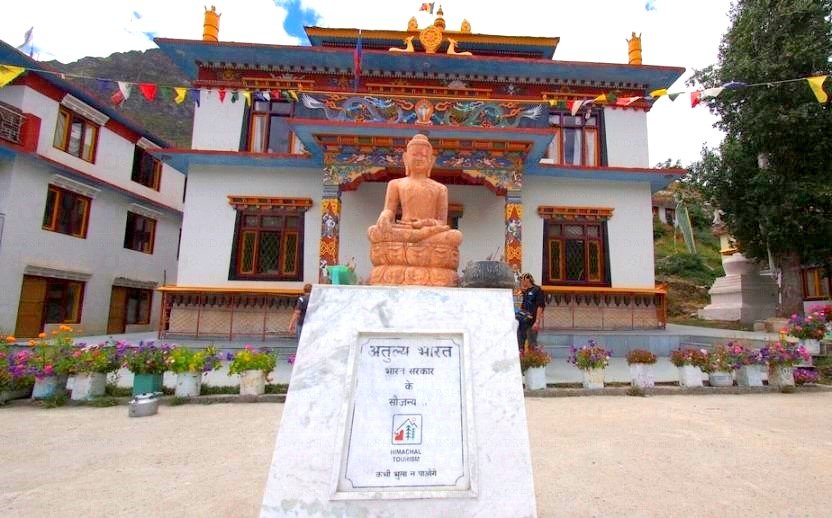Kardang Monastery or Gompa is a famous Drukpa Lineage monastery and is the most important monastery the Lahaul valley, India. The associated village of Kardang was once the capital of Lahaul.
Shrine’s History
The monastery is believed to have been built in the 12th century and houses a large library of Buddhist literature, including the Kangyur and Tangyur scriptures in the Bhotia or Sherpa language. There is also a good collection of fine thankas, musical instruments such as lutes, drums, horns, as well as old weapons. There are colourful frescoes and murals. The monastery was in ruins until it was renovated in 1912 CE by Lama Norbu Rinpoche, who, with Lama Kunga, turned it into “a proper educational and training establishment.” In the first room is a 4-foot high silver chaitya or shorten preserving the skull and ashes of Lama Norbu. To the right of it are statues of Padmasambhava and Tara, and in the back, one of Tagden Shakyashree, the guru of Lama Kunga. 103 volumes of the Kangyur are kept here, while behind are 64 tantra books on various subjects.
The second room is the main Prayer Hall with an eleven-headed statue of Avalokitesvara. On a high pedestal at the right are some of Lama Norbu’s castoff garments and with a skull in front. In the third room is a six-foot wooden prayer wheel with a brass bell on it. There are now about thirty monks and nuns in the monastery, and two British nuns have studied, meditated, and been initiated in recent years. The monks and nuns have equal rights, and the monks have permission to marry. The monks spend the summer with their families working their fields, in the winter they return to the monastery. There is a huge prayer drum in the monastery with the sacred six-syllable mantra, Om Mani Padme Hum, written a million times on strips of paper. It also has a Narbo as its head lama. Because the monastery is on the southern bank of the Bhaga River, it gets very little sun, while Keylong on the opposite side gets far more as it is facing south. Because of this the Moravian Christian mission, which was established here in 1857, was later moved across the river to Keylong.

Architectural Relevance of This Shrine
The monastery is a huge white building bedecked with prayer flags. It is situated on a ridge below the 15,000-foot Rangcha peak, at an altitude of 3,500m on the left bank of the Bhaga River, facing the town of Keylong, about 8 km away.
By Road
The nearest Bus stop is Kardang
By Rail
The nearest Railway station is Lahaul and Spiti.
By Air
The nearest Airport is Bhuntar Airport (KUU), Kullu, Himachal Pradesh.






































